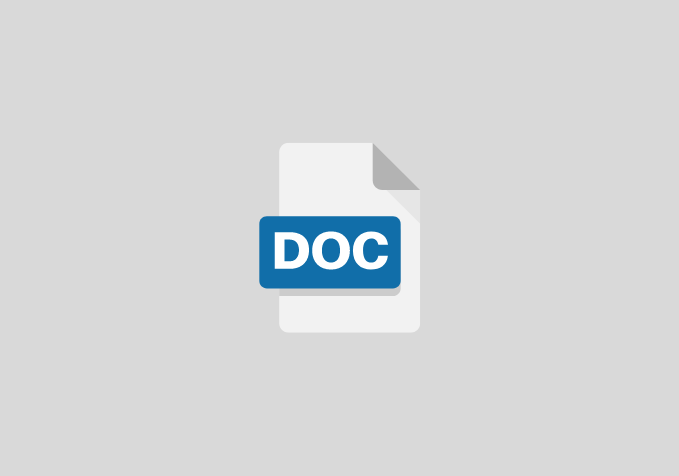The Empirical Study on the Impact of Computer Science in Multimedia
CHAPTER ONE
OBJECTIVE OF THE STUDY
The objective of the study is to provide a deeper understanding and knowledge into different specializations of computer science and prepare for an active role in computer science research and development.
This project work is intended to provide people with a conceptual framework for thinking about the emerging area of multimedia computing. Whether these categories develop into significant applications aid/or remain distinct technologies remains to be seen.
CHAPTER TWO
INTRODUCTION
Multimedia computer systems are developing in the broader contents of a highly dynamic computing environment (Van Houweling et-al) has surveyed numerous importable computing trends, some which are summarized and elaborated upon here. Computer and data communication technologies are continuing to develop at a rapid rate, providing higher performance while reducing both the cost and size of system components. As prices decline, users will increasingly employ powerful computer workstations, which be equipped with high resolution displays and high capacity magnetic and optical storage units. Information in many media formats will be stored in digital form, and improved cost effective me thuds of converting older materials in non-digital formats. Computer messaging and conferencing systems will be increasingly important services of information in the networked environment.
REVIEW OF RELATED LITERATURE
In this chapter, various related literature will be reviewed, this is with the hope that deeper and in-depth knowledge of computer in multimedia systems will be reviewed to enable the study to suggest lasting solutions to the problems.
In light of the above, therefore, the researcher, organized this chapter into the following subheadings.
- computer multimedia systems (CMS)
- Relationship between CMS and other computer related systems
- How CMS aid learning and other architecture
- Samples of CMS systems (Examples)
- Characteristics of a CMS
COMPUTER MULTIMEDIA SYSTEMS (CMS)
A computer system with the capabilities to capture, digitize, compress, store, decompress and present information is called multimedia system. (Charles W. Bailey JR) the aim of multimedia system is to provide a creative and effective way of producing, storing and communicating information. The application and uses of multimedia are,
- Multimedia presentation: multimedia presentation can be used to better explain a subject matter to the students because it enhance the comprehension capability of students. It is extremely effective in getting across new ideas and concepts (Bailey 1989).
- Entertainment: Multimedia technology is used by entertainment industry as in games, film, cartoons, animations, sound effects etc.
- Software: According to Bailey” Multimedia is used for training purpose or guide, so users can operate software without help of trainers.
RELATIONSHIPS BETWEEN CMS AND OTHER COMPUTER RELATED SYSTEMS
The relationships of computer multimedia system (CMS) and other computer related systems are numerous. However, this research work will discuss the relationship between CMS and the world Wide Wed (WWW) internet.
According to “Micheal Miley” 1989” internet and multimedia is related to each other, multimedia is a combination of text, image, graphics, audio, animation etc, Nowadays all these are available on the internet.
- We can share sexual, graphic, audio, or video file over the internet.
- Now we can connect with the people all around the world through internet by community websites, chats and e-mails.
- We have various search engines for our text, Image, or audio, video quarries, to give the answer.
- Life can download movies, songs, ppts etc from the internet
- We can uphold various information’s on the internet
- We can play online games.
CHAPTER THREE
RESEARCH DESIGN AND METHODOLOGY
This chapter deals with the research methodology used in the study. The researcher discloses the research design sampling techniques, sources of data, data collection me thuds, techniques for data analysis and sources of data.
RESEARCH DESIGN
The present research work is a survey research design to survey the relationships, use and applications of computers in multimedia systems. The reason for adopting a survey method is because of the vast nature of the area under study.
CHAPTER FOUR
DATA PRESENTATION, ANALYSIS AND INTERPRETATION
DATA PRESENTATION
During the research work: the number of 20 questionnaire were administered randomly to 20 students from the school of engineering, Fidei Polytechnic Gboko. The departments within the school in consideration includes.
CHAPTER FIVE
SUMMARY, RECOMMEDATION AND CONCLUSION
SUMMARY
In this research work, computer multimedia systems (CMS) were explored, its samples, examples, characteristics different forms of CMS are discussed in details. Problems associated with computer multimedia systems are also explored. However from the study it was also observed that CMS are highly beneficial to the educational sectors and other fields.
CONCLUSION
Computer multimedia system are highly beneficial to graduates, students and teachers of computers science departmental other fields with many fiscal, legal, organizational standardization and technological challenge. The various forms of multimedia systems are however, increasingly enhancing learning, entertainment and research in different areas of science and arts worlds respectively.
RECOMMENDATION
In the cause of carrying out this research work, which the researcher was able to draw conclusion, the researcher also ma de some recommendations this:
Graduates of computer science should be oriented on the types of jobs to be targeted at in order to promote self entrepreneurship.
Students are to be guided and properly taught on how to use and apply CMS to daily likes and learn to appreciate them to enhance faster learning and understanding of different courses.
REFERENCES
- Ben Shneiderman, (1989): An introduction to a New Way of organizing and Accessing Information.
- Charlse W. Bailey Jr, (1989): The Next Generation of Library automation systems
- Carl Franklin (1989): The Next Generation of Interactive Technologies.
- Chai Jer Isai. (1988-89): Technology Applications and Research Issues.
- Ching-chil chen, (1989): why current Technology is Ready for Multimedia and Hypermedia Applications.
- Clifford A. Lynch, (1989): Large Databases, and relational Database management systems.
- Douglas E. Van Houweling, (1987): Information Technology
- Jeff Conklin, (1987): An introduction and survey
- Karen A. Frankel, (1989): The Next generation of interaction.


